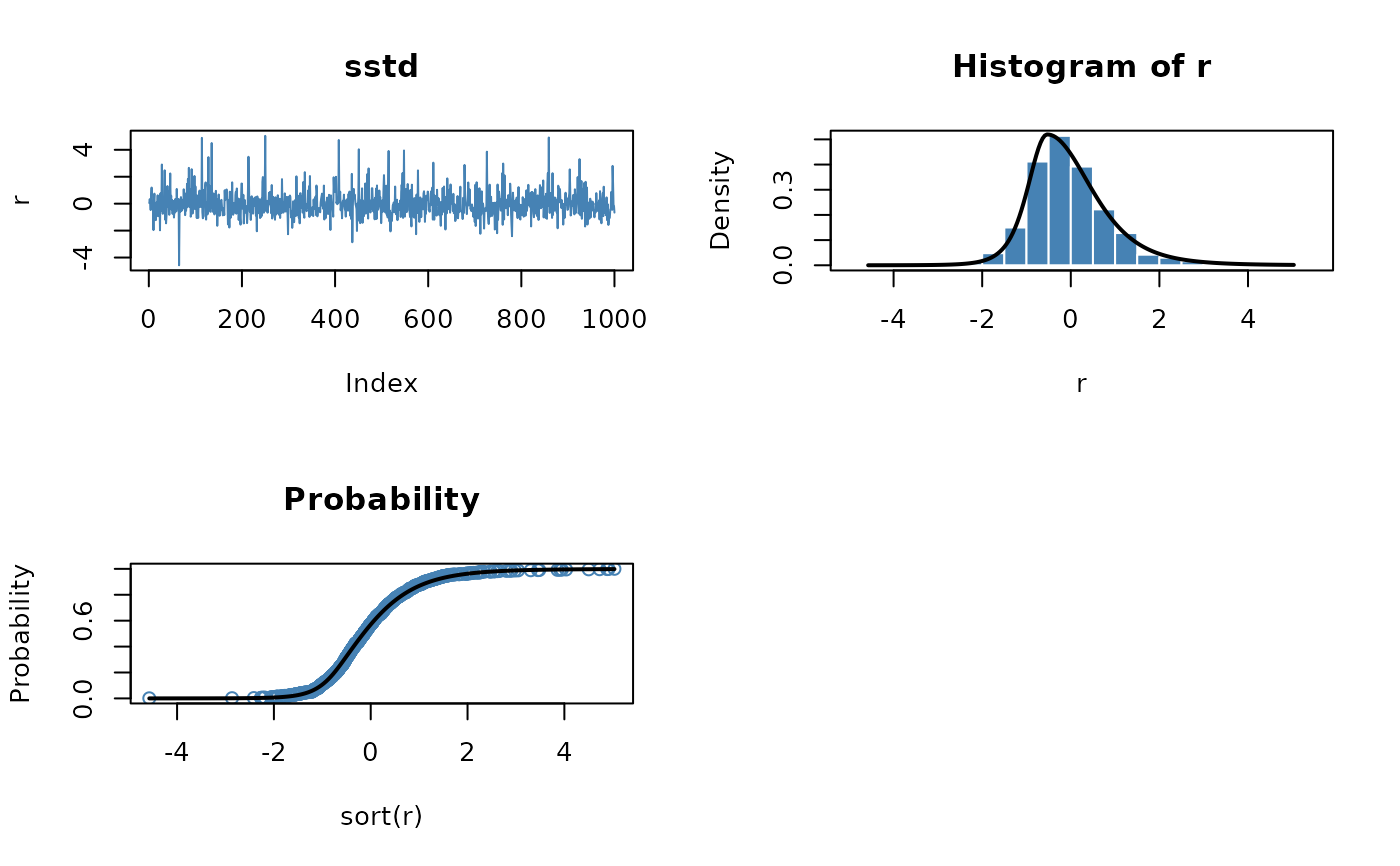Skew Student-t distribution
dist-sstd.RdFunctions to compute density, distribution function, quantile function and to generate random variates for the skew Student-t distribution. Note that there are different ways to define a skew-t distribution, check section Details to see if this is the distribution you want.
Usage
dsstd(x, mean = 0, sd = 1, nu = 5, xi = 1.5, log = FALSE)
psstd(q, mean = 0, sd = 1, nu = 5, xi = 1.5)
qsstd(p, mean = 0, sd = 1, nu = 5, xi = 1.5)
rsstd(n, mean = 0, sd = 1, nu = 5, xi = 1.5)Arguments
- x, q
a numeric vector of quantiles.
- p
a numeric vector of probabilities.
- n
number of observations to simulate.
- mean
location parameter.
- sd
scale parameter.
- nu
shape parameter (degrees of freedom).
- xi
skewness parameter, a positive number.
xi = 1gives a symmetric distribution (here normal).- log
logical; if
TRUE, densities are given as log densities.
Details
Skewness is based on the scheme by Fernandez and Steel (2000) but with
different parameterisation as discussed by Wuertz et al (????), in
that the skewness (xi), degrees of freedom (nu),
mean (mean) and standard deviation (sd) are independent
parameters.
dsstd computes the density,
psstd the distribution function,
qsstd the quantile function, and
rsstd generates random deviates.
References
Fernandez C., Steel M.F.J. (2000); On Bayesian Modelling of Fat Tails and Skewness, Preprint, 31 pages.
Wuertz D., Chalabi Y. and Luksan L. (????); Parameter estimation of ARMA models with GARCH/APARCH errors: An R and SPlus software implementation, Preprint, 41 pages, https://github.com/GeoBosh/fGarchDoc/blob/master/WurtzEtAlGarch.pdf
See also
sstdFit (fit),
sstdSlider (visualize)
Examples
## sstd -
par(mfrow = c(2, 2))
set.seed(1953)
r = rsstd(n = 1000)
plot(r, type = "l", main = "sstd", col = "steelblue")
# Plot empirical density and compare with true density:
hist(r, n = 25, probability = TRUE, border = "white", col = "steelblue")
box()
x = seq(min(r), max(r), length = 201)
lines(x, dsstd(x), lwd = 2)
# Plot df and compare with true df:
plot(sort(r), (1:1000/1000), main = "Probability", col = "steelblue",
ylab = "Probability")
lines(x, psstd(x), lwd = 2)
# Compute quantiles:
round(qsstd(psstd(q = seq(-1, 5, by = 1))), digits = 6)
#> [1] -1 0 1 2 3 4 5
